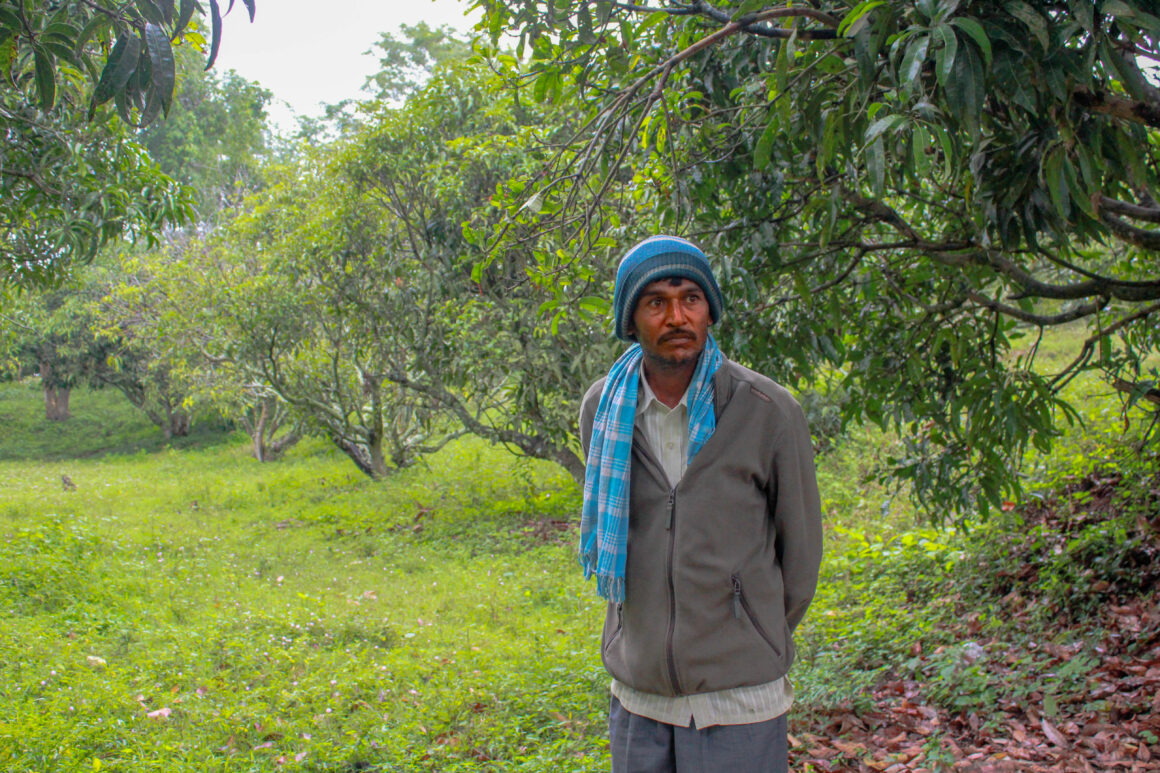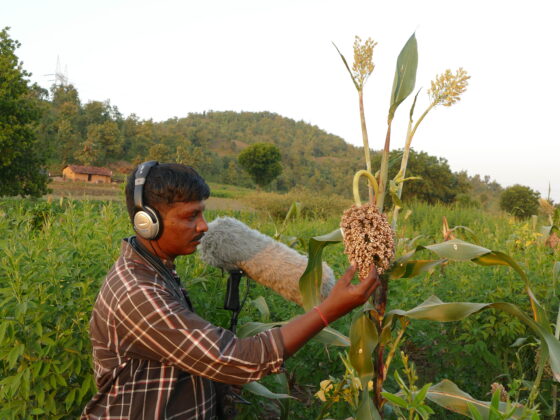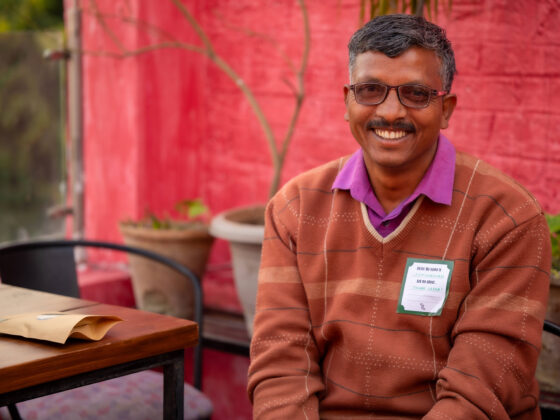For farmers working in proximity with forested areas, cultivating food crops is fraught with conflict. But a community led initiative is now trying to safeguard both—local farms in southern India’s ragi growing belt as well as wild elephants who can’t get enough of the tasty millet.
Motwaal, a 50-something-year-old wild elephant bull, has recently visited farmer Anand Ramu’s mango orchard, and eaten over 50 mangoes—sack and all! This is the first piece of news we hear upon arriving in the village of Palya, near Thalli town, just across the Karnataka border in the western corner of Krishnagiri district of Tamil Nadu, to meet Anand.
We are at the edge of the Jawalagiri Forest Range—a dry deciduous forest that is part of the much larger Cauvery North Wildlife Sanctuary, in the Eastern Ghats of Southern India. Here, farms are frequently visited by wild elephants in search of tasty morsels, and Anand’s is hardly half a kilometre from the forest’s boundary.
At the moment, he is more distressed by the damage the plastic sack could have done to Motwaal’s stomach. Nishant Srinivasaiah, an elephant behavioural ecologist with the Foundation for Ecology Research, Advocacy and Learning (FERAL, India), works in the region and is our guide on this visit. He reassures us that elephants have a simple digestive tract, so a sack would pass right through without doing much harm.
As we stroll through five acres of mango orchard, with some 350 fruiting trees, Anand points a long finger towards a lone jackfruit tree bursting with fruit. “That is Motwaal’s tree,” he says with pride and glee. “I found a sapling sprouting from a seed in his dung and planted it on my farm. It produces the tastiest jackfruits I’ve ever eaten!”
These accounts are quick to reveal just how much the lives of local residents are intertwined with those of their non-human neighbours. In fact, it was Motwaal who first ‘introduced’ Nishant and Anand in 2017, when Nishant was observing elephants in the region and followed the bull to Anand’s farm. Their interest in safeguarding both—local farms and wild elephants—soon grew into an incredible collaboration.
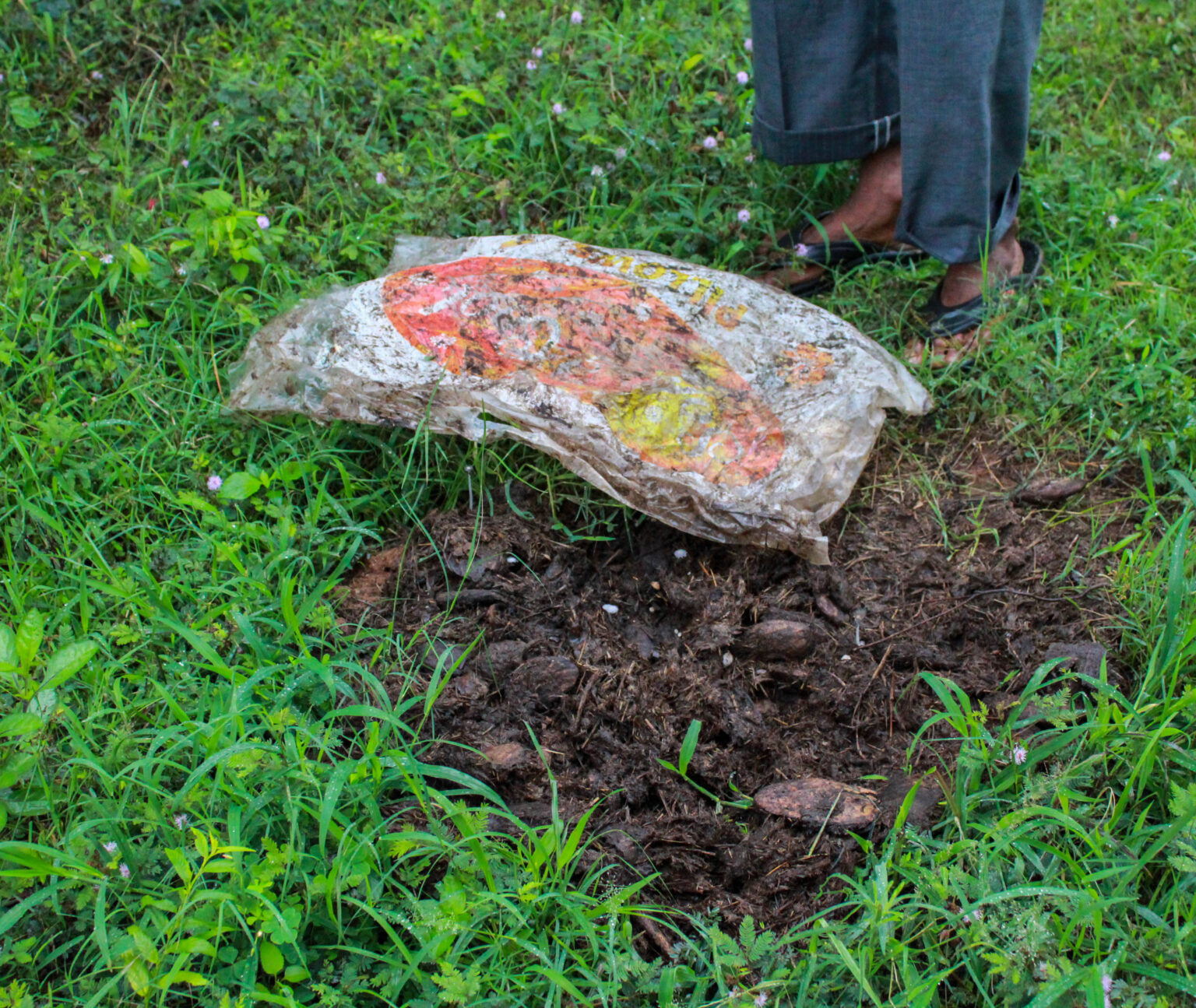
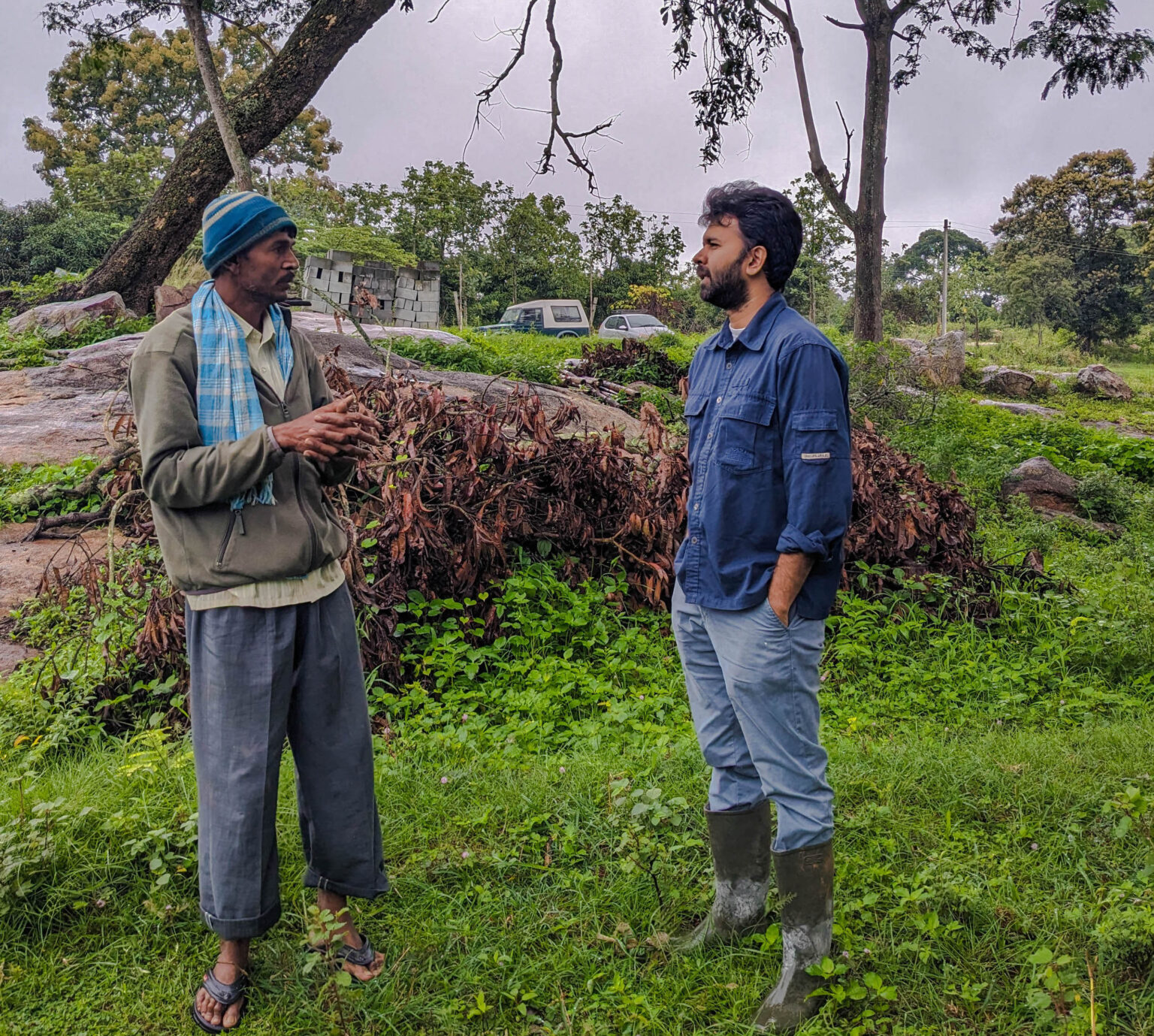
In southern India, ragi is grown extensively across Karnataka, Tamil Nadu, Andhra Pradesh, and Telangana. A rainfed crop with a life cycle of three to five months, it can be grown as a kharif or rabi crop, often intercropped with legumes and pulses in alternate seasons. The millet forms a central part of the staple diet in the region, particularly among the agricultural communities that cultivate it.
Apart from mangoes—their primary source of income—Anand’s family allocates about eight acres of land towards growing an annual crop of ragi, typically intercropping it with horse gram. He used to intercrop groundnuts too, but has stopped cultivating them now—they are a favourite of wild pigs.
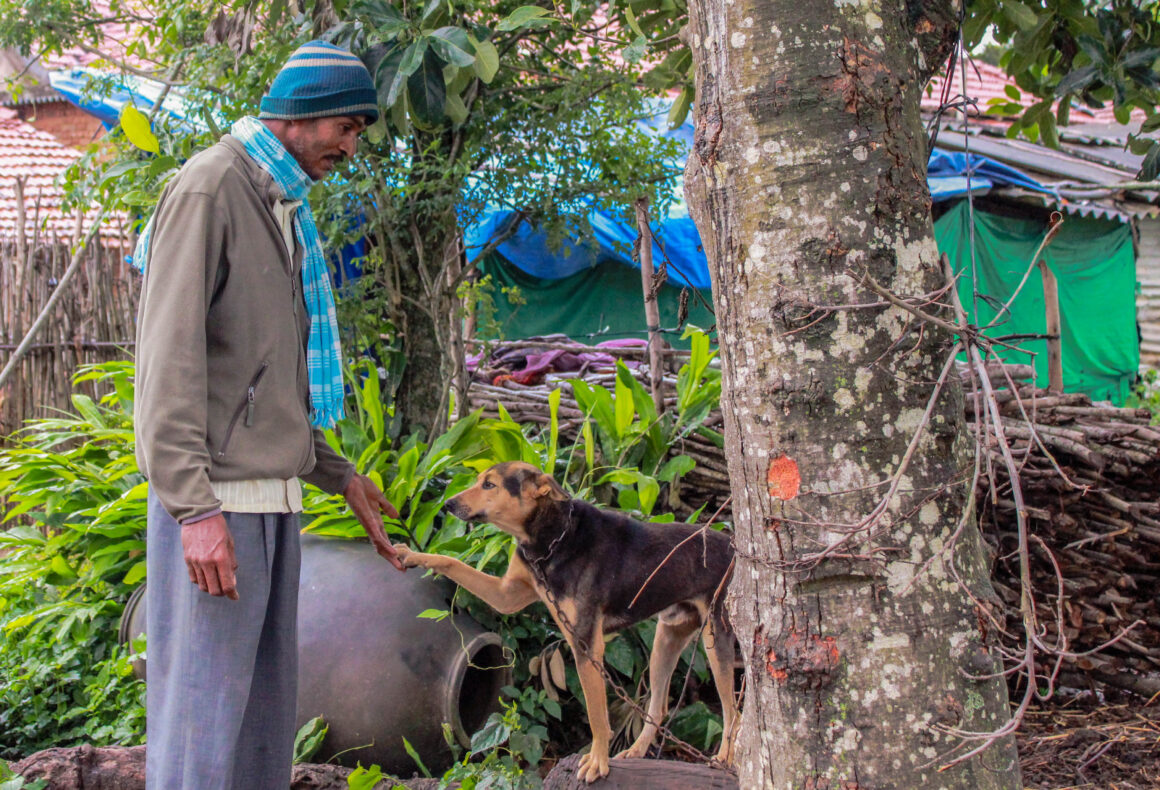
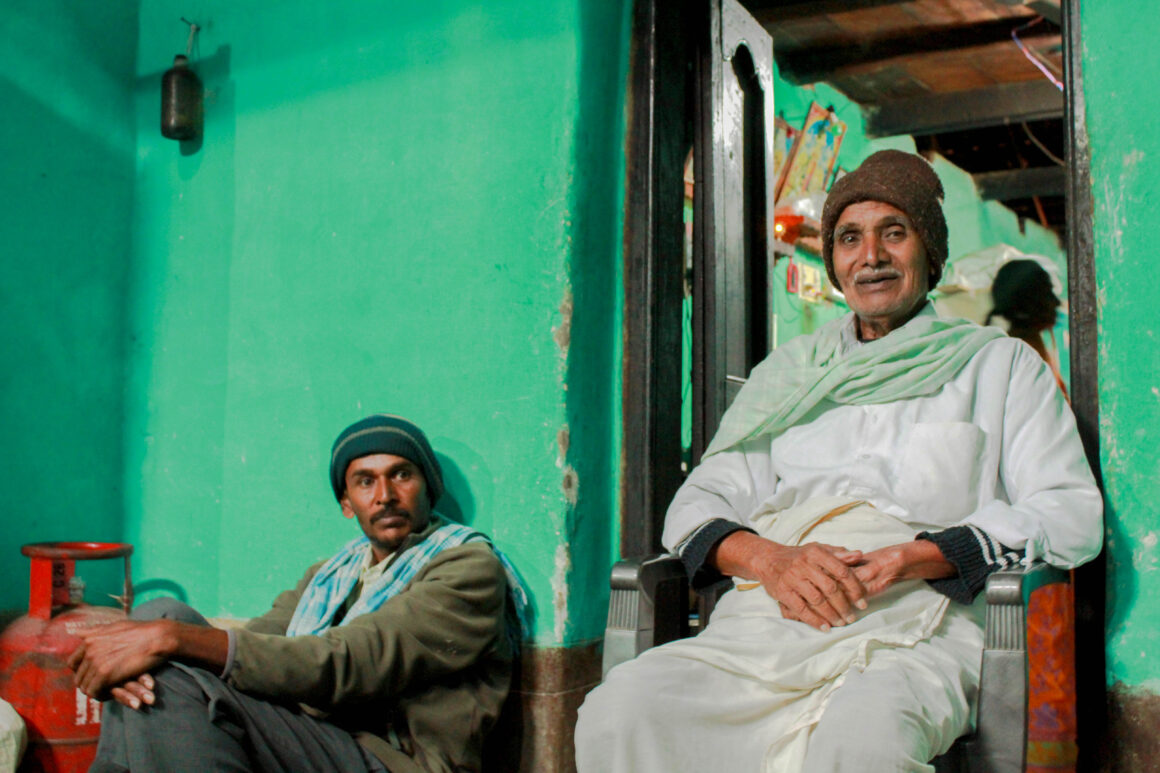
Farming against the odds
For many decades, families in this region have been growing ragi commercially, on small and medium farms. But now, if they grow it at all, it is primarily for their own consumption. Only surplus, which is rare, is sold.
Ragi draws conservative market prices. For farmers to sell directly to the government and claim the state-declared Minimum Support Price of Rs 35-38 per kilogram (2022-24), they must show proof of local land ownership, and bear the costs of cleaning, milling, and transportation. Most small-scale farmers simply sell through middlemen, who purchase ragi for as low as Rs 27 per kilo.
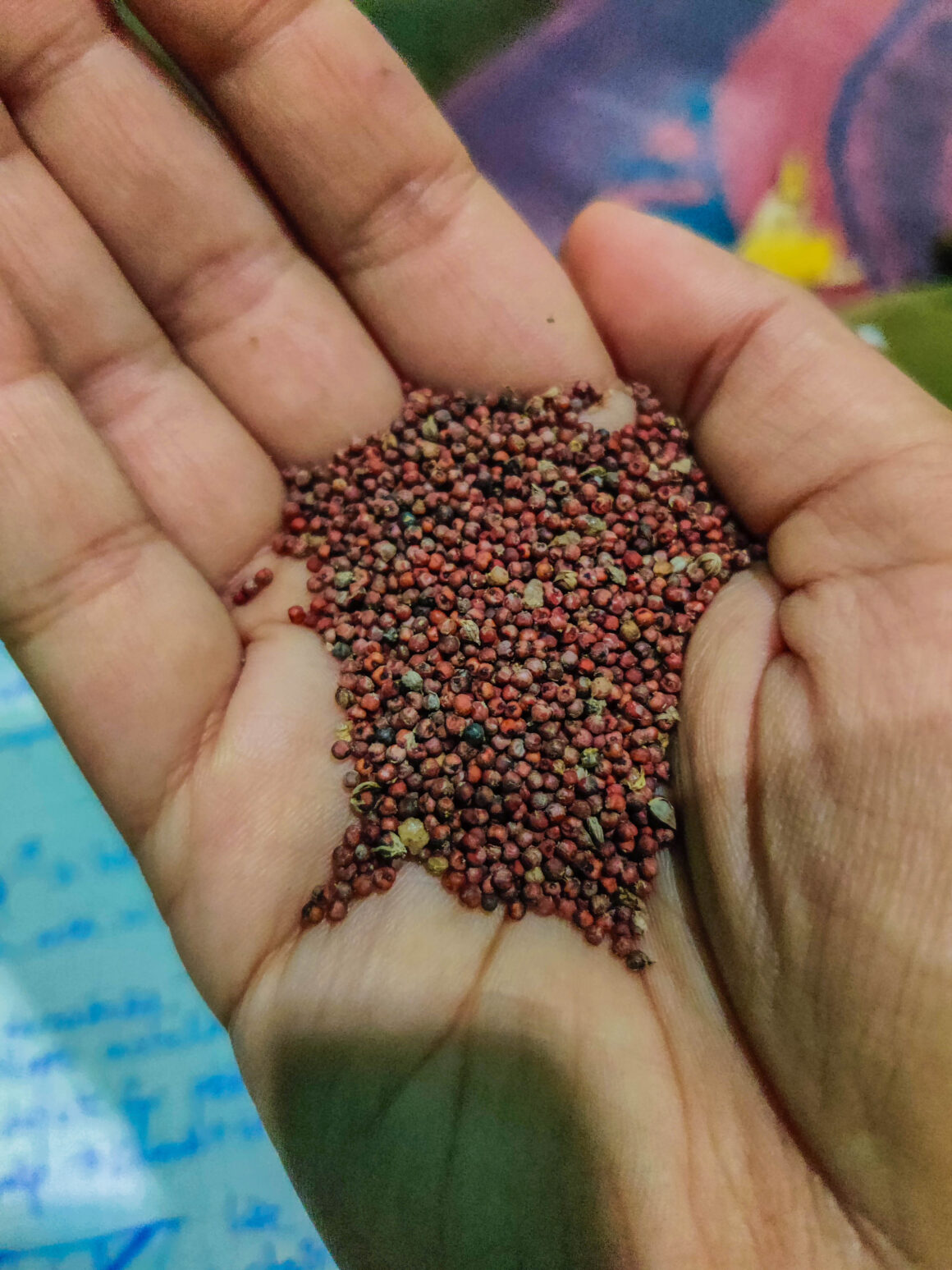
Hiring labour during sowing and harvest is another hurdle, because farm hands are hard to come by, and expensive. The charges per person can be as high as Rs 600 per day, apart from meals and other sundry expenses like tea and bidis. “Farmers have to bear many difficulties for meagre earnings,” Anand laments. And then, there are unseasonal rains and visits from wildlife. “It’s too tough!”
Anand’s fields are visited by elephants at least once a week, and even more often by smaller wild animals like monkeys and wild pigs. “(The wild animals) will eat whatever you plant—but you have to plan rotating crops for your land to remain fertile,” he says. “If we eat the same thing every day, won’t we get sick of it? The land is no different!” Apart from intercropping, Anand only uses heirloom seeds saved from previous harvests and his own compost and livestock manure. He refuses to use hybrid seeds, chemical fertilisers, and pesticides on his soil.
“I found a sapling sprouting from a seed in his dung and planted it on my farm. It produces the tastiest jackfruits I’ve ever eaten!”
When elephants visit a crop field, the damage to crops is higher from their trampling than the actual loss due to feeding. And when they are actively chased from the fields by people, the damage can be as high as 70 percent of the area, leaving farmers with next to nothing for their own consumption, let alone for market sales. Stacked over meagre market rates, it is no surprise that several farmers in the region have moved away in search of other livelihoods.
So what motivates Anand to keep farming against these odds? There is, of course, the responsibility of looking after the elders in his family. But along the way, he has found his purpose. Since 2017, Anand and Nishant have begun to use their understanding of elephant behaviour to pilot a new kind of fencing system—the hanging fences—to literally build a solution to farm alongside elephants, and enable others along this ragi belt to do the same.
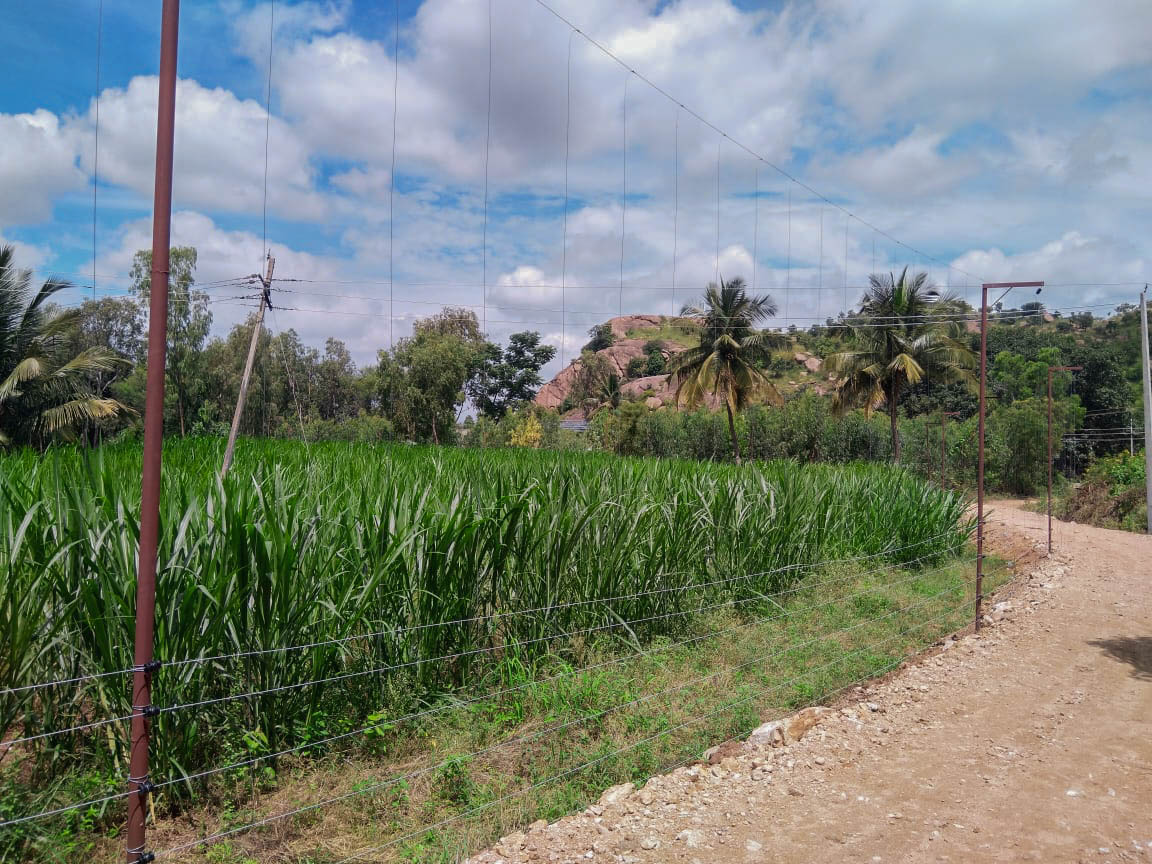

Traditional fences have horizontal wires, powered by solar-charged batteries. While they are effective at keeping smaller animals like deer and pigs from venturing into crop fields, elephants have learned to identify electrified wires and use their tusks and logs (both electric insulators) to break them down.
The hanging wire fences, however, are more dynamic. Because they are not fixed the elephants have nothing to hold onto, and break down.
One row of ragi for the elephants
Around midday, we are invited into Anand’s home for a lunch of ragi mudde, warm, silky balls of cooked ragi flour dough, served with sambar, and ghee made from the family’s cows’ milk. As we eat, Nishant lets on that the farmers aren’t the only ones at risk from elephant movement in these parts. When elephants venture out of the forest, they can be electrocuted to death by the power lines, shot or poisoned by people out of fear or desperation. They are sometimes even hit by trucks or buses while crossing the road. “All sorts of things can happen,” he says.
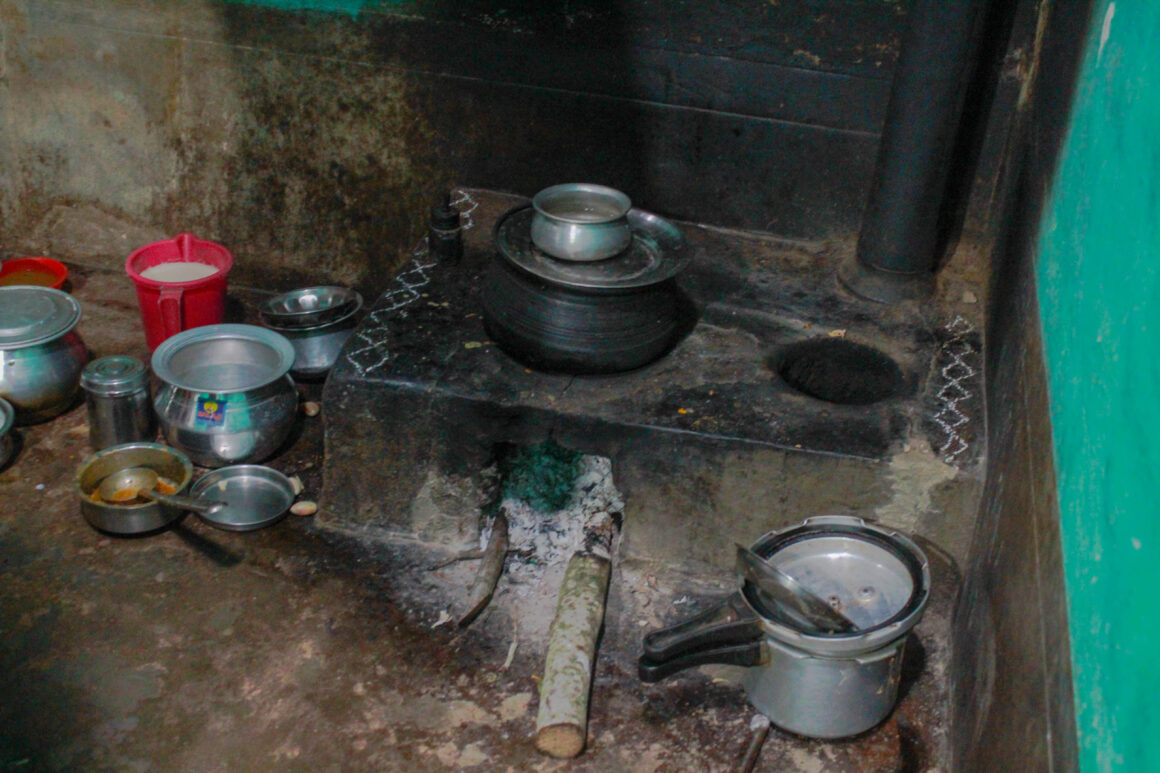
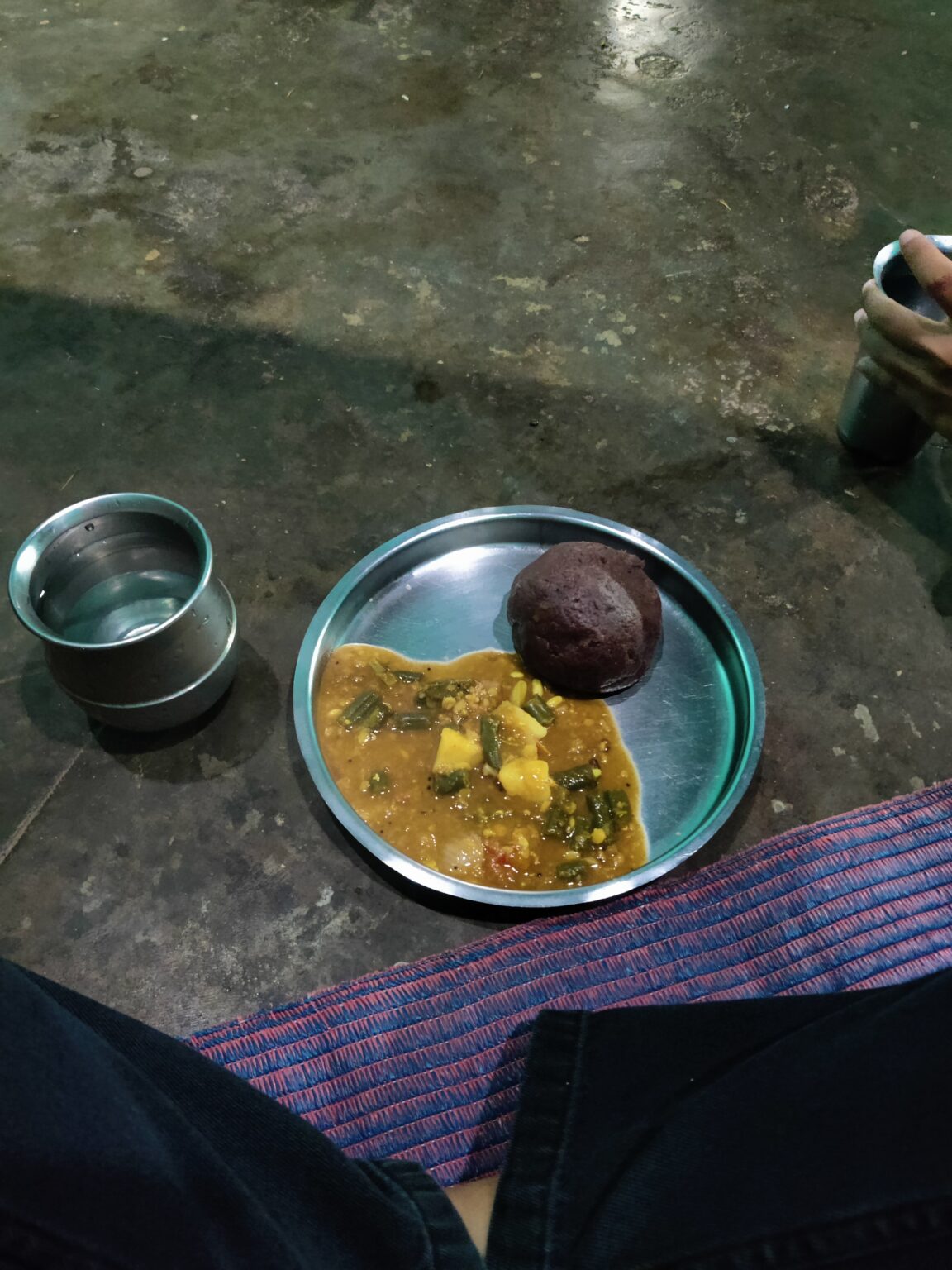
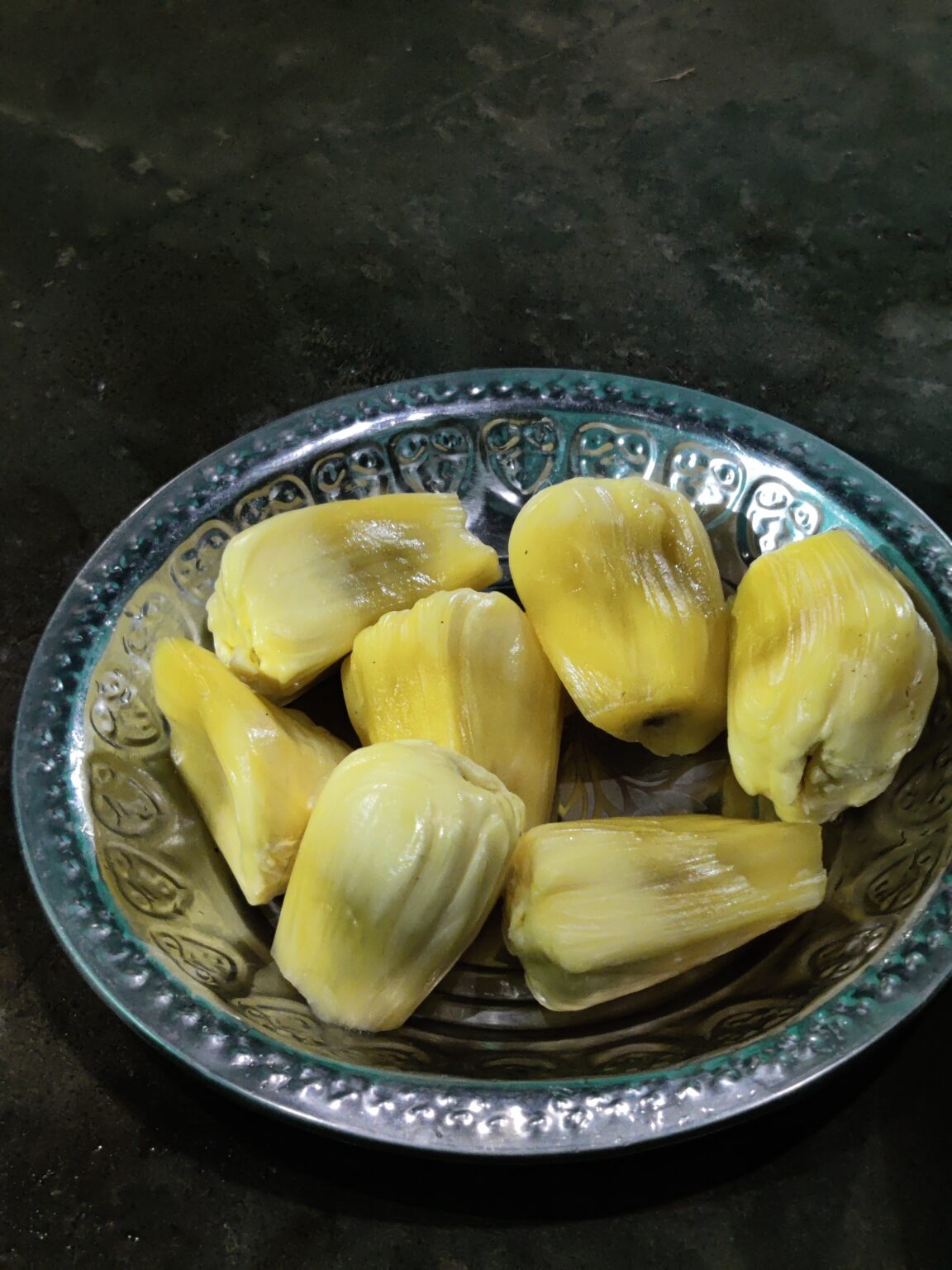
Then, delicious as it may be, why do elephants journey out for a little ragi? It turns out that these clever creatures are making an astute risk-benefit analysis every time they travel in search of food. While they spend most of their day foraging for edible plants in the forest such as various grasses, and browse species like acacia and ficus, consuming up to 200 kilograms of plant matter, these wild greens are not nearly as nutritionally dense as ragi.
Adult males, particularly between the ages of 10 and 25, have explosive growth spurts. During this phase, those who consume more nutrition, and consume it faster, are at an advantage in the wild, Nishant explains. “And once you get a taste of hotel food, why would you want to eat at home?” Anand offers up with a grin.
Since 2017, Anand and Nishant have begun to use their understanding of elephant behaviour to pilot a new kind of fencing system—the hanging fences—to literally build a solution to farm alongside elephants, and enable others along this ragi belt to do the same.
Nishant, who is particularly interested in decision-making behaviours among elephants, has introduced another mechanism to the hanging fence system. Farmers consciously leave one row of the crop just outside the hanging wires, accessible to the elephants.
When they nibble on, and play with this row of crops, they also interact with the fence wires, where a mild shock deters them from coming closer. As they move further down along the fence, they find more grain. This keeps them away from the main crop field, and occupied around the external periphery for seven to eight hours during the night, until they must return to the safety of the forest at daybreak.
“Their memory is so incredibly powerful that they remember which fields and fences gave them an uncomfortable experience. So sometimes even if the fences are removed, they remember these areas and avoid them,” Nishant says. Instead of vilifying the elephants, this mechanism works to teach them that crop fields are out of bounds. In time, it could also teach that the risk of leaving the forest may no longer be worth it.
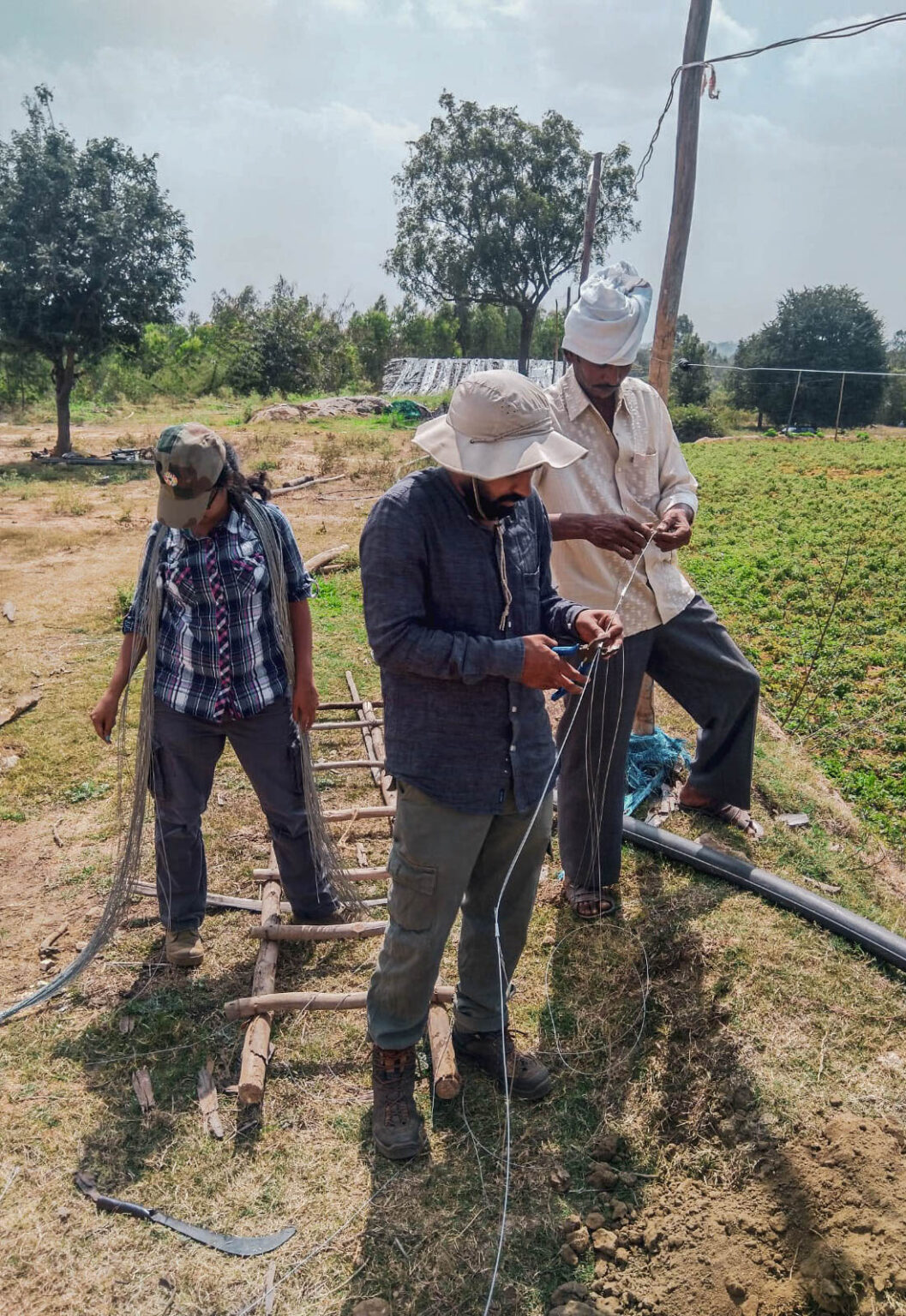
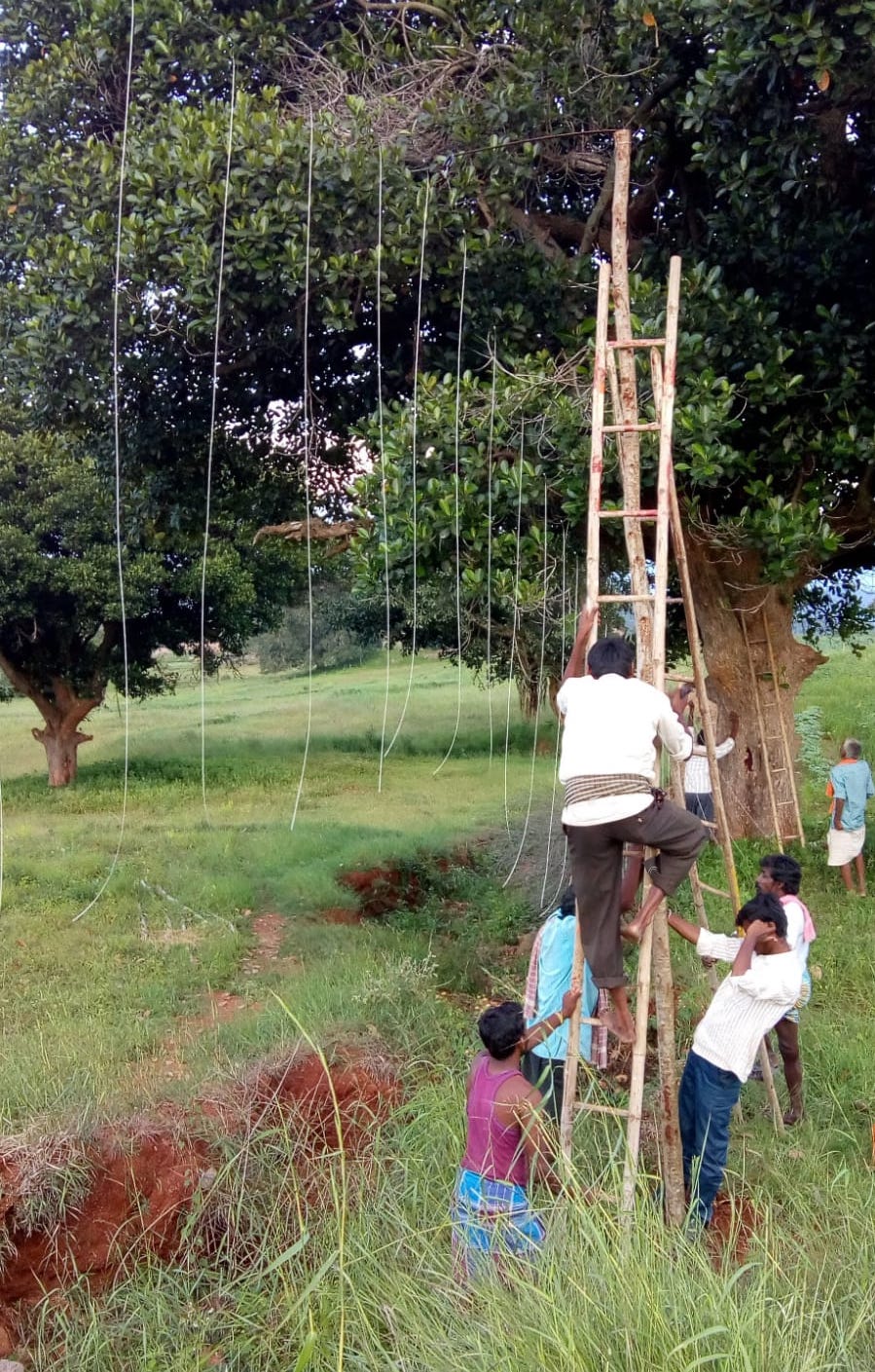
In spite of the novel technology, the hanging fence system costs one-fifth that of traditional fencing, at Rs 1.5 lakh per kilometre. And in some divisions, the Forest Department now subsidises 50 percent of this expense. This cost can be further divided through community-sharing, where groups of farmers with adjacent fields can install them around their collective landholdings.
Historically, machans were used to guard fields against marauding elephants at night. The effectiveness of the hanging fences means that this night watch is no longer needed, saving farmers the additional physiological and psychological costs of prolonged sleep deprivation, Anand adds.
Families using these fences have been able to grow enough ragi for their own needs in the first and second year of installation. By year three, with enough grain in store, many have diversified to grow mustard, tomatoes, chillies, castor, fruit orchards, timber trees and other cash crops, improving their earnings significantly.
Mitigating the staggering costs of cultivating ragi in such close proximity to wildlife is certainly a step towards farmers retaining their agricultural livelihoods. But Anand’s mission goes further. Since 2019, Nishant and his team has helped Anand and nearby farmers market their mangoes and ragi to consumers in Bangalore at a premium under the banner ‘Shared with Elephants’. The story is so powerful that their entire harvest is pre-booked before it even reaches the city!
Now they hope to enable more farmers to share their stories with consumers directly, so they can be remunerated fairly and rewarded for their commitment to farm in harmony with the wildlife that lives among them.
Shivani Unakar is a researcher and writer particularly interested in the intersection of food, people and place, examining how they influence identity, culture and food systems at large.
Thanks to Anand Ramu and Nishant Srinivasaiah for their time, and for showing us around Anand’s farm.

This article is part of the Millet Revival Project, The Locavore’s modest attempt to demystify cooking with millets, and learn the impact that it has on our ecology. This initiative, in association with Rainmatter Foundation, aims to facilitate the gradual incorporation of millets into our diets, as well as create a space for meaningful conversation and engagement so that we can tap into the resilience of millets while also rediscovering its taste.

Rainmatter Foundation is a non-profit organisation that supports organisations and projects for climate action, a healthier environment, and livelihoods associated with them. The foundation and The Locavore have co-created this Millet Revival Project for a millet-climate outreach campaign for urban consumers. To learn more about the foundation and the other organisations they support, click here.
